#common shelduck
Text
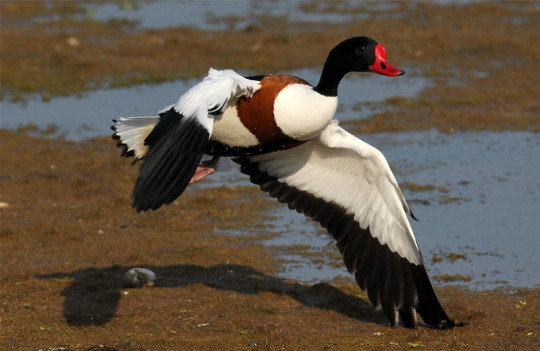
A male common shelduck (Tadorna tadorna) in the United Kingdom
by Nick Dean
#common shelduck#shelducks#ducks#waterfowl#birds#tadorna tadorna#tadorna#anatidae#anseriformes#aves#chordata#wildlife: uk#wildlife: europe
479 notes
·
View notes
Text
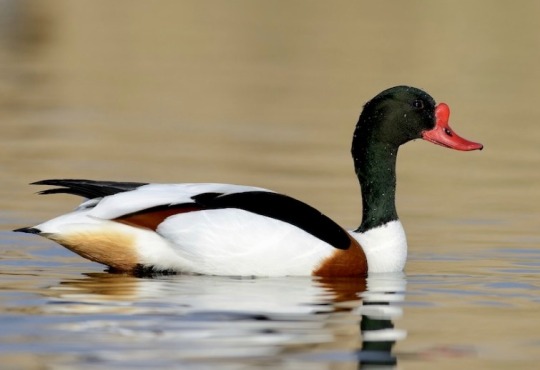




the common shelduck is a migratory duck largely found in eurosiberia. males and females look similar, but males have sharper coloration and lack white markings on the face that are present in females. the species primarily feeds on small invertebrates such as crabs and grasses. during the breeding season, the species is largely found around lakes and rivers; their nests are often made in unusual locations such as rabbit burrows and haystacks.
555 notes
·
View notes
Text

[2640/11080] Common shelduck - Tadorna tadorna
Order: Anseriformes
Family: Anatidae (ducks, geese and swans)
Subfamily: Tadorninae
Genus: Tadorna (shelducks)
Photo credit: Pavel Štěpánek via Macaulay Library
85 notes
·
View notes
Text
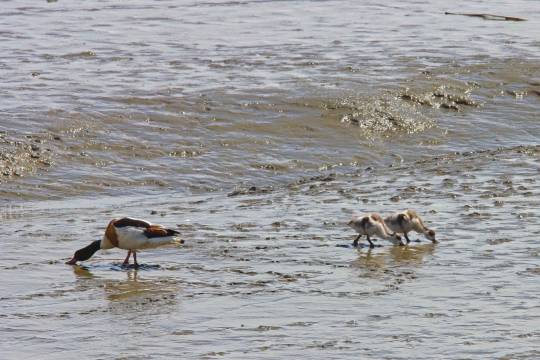

Shelduck with their fluffy chicks, looking for food in the mud.
167 notes
·
View notes
Photo
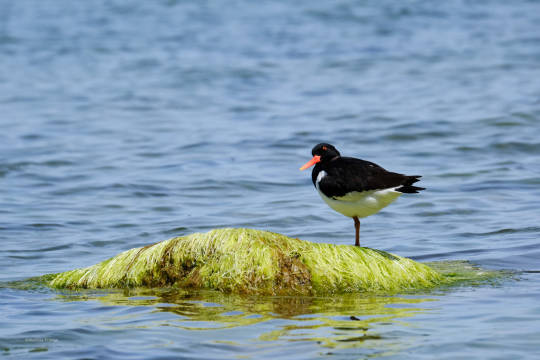

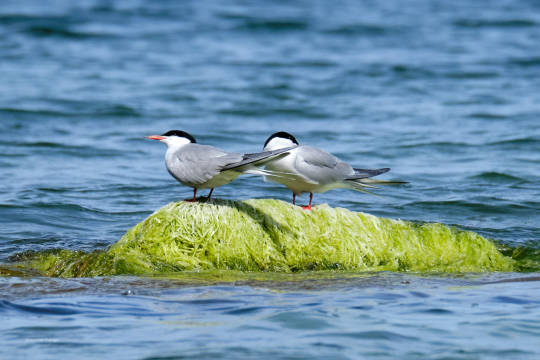


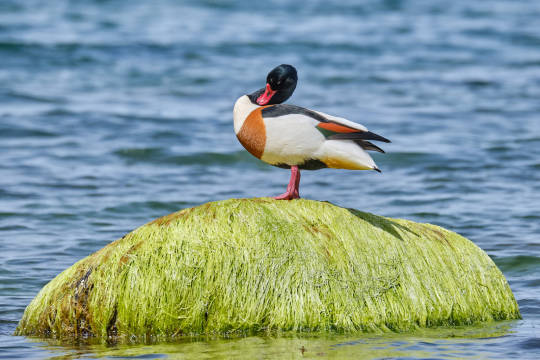




Birds on the rocks
#photographers on tumblr#original photography blog#baltic sea#Brodtner Ufer#bird watching#bird photography#oystercatcher#Austernfischer#arctic tern#Küstenseeschwalbe#goosander#Gänsesäger#common shelduck#Brandgans#wagtail#Bachstelze
196 notes
·
View notes
Text

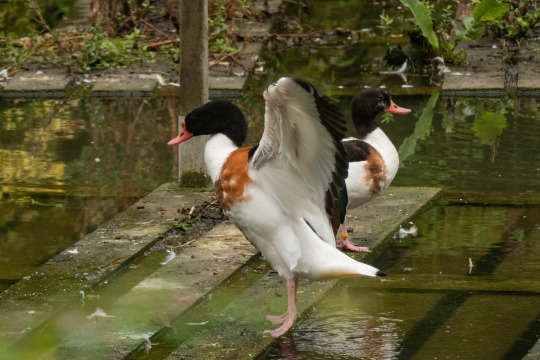
Tadorne de Belon - Début juillet, ils font une migration de mue qui regroupe adultes nicheurs et non reproducteurs. Plusieurs dizaines de milliers d'individus se réunissent sur un banc de sable. Une fois la mue terminée, ils retournent dans leur pays d'origine.
#animaux#animaux sauvages#wild animals#animals#photo#photo animalière#animals photography#zoo#canard#oiseau#duc#bird#tadorne de belon#common shelduck#shelduck#waterfowl
5 notes
·
View notes
Photo
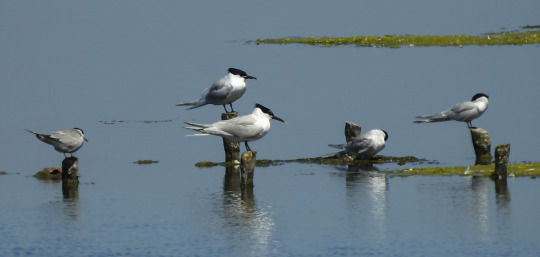




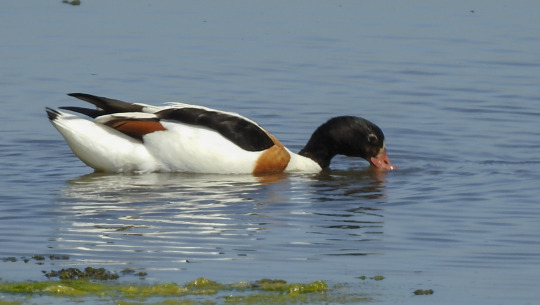

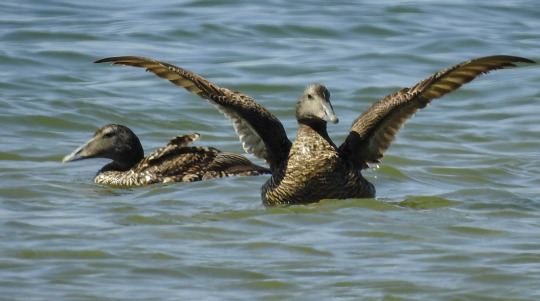
frolicking in the water
Photos © art-of-crow
#Art-of-Crow#cool-crows#photography#nature#birds#common tern#sandwich tern#common redshank#eurasian oystercatcher#common shelduck#common eider#greylag goose#eurasian spoonbill
3 notes
·
View notes
Text




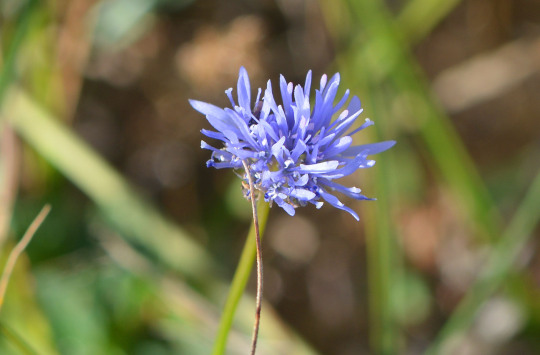

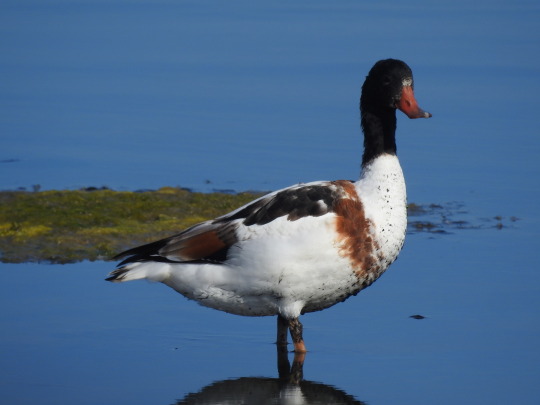

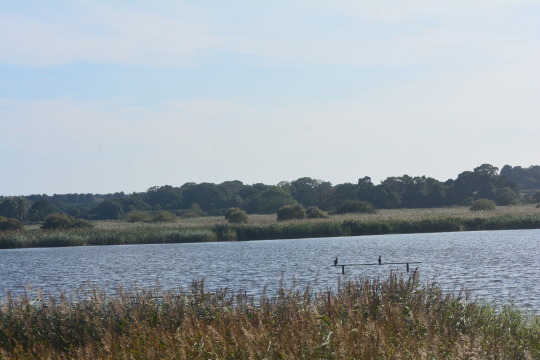
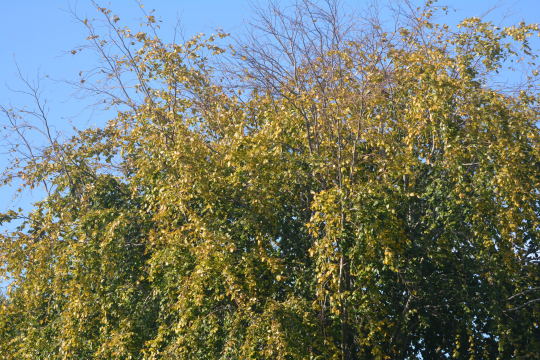
25/09/2023-RSPB Minsmere
Photos taken in this set are of: 1. One of a few Common Sandpipers I relished seeing today, with Green Sandpiper seen well too, some of my greatest ever views of the rustic and cheery Common Sandpiper. 2, 4, 8 and 9. Beautiful views, it really is such a vast, precious and wild mixture of habitats; endless reedbeds, glistening scrape, sea, rich woodland, grassland, views of heath and strong vistas all around. It was so invigorating to be out here so long today to begin the weekdays of my week off, the relaxing that weeks off are all about for me. 3. A Small Copper I really enjoyed seeing at the visitor centre. 5. Some glorious sheep's bit which I was thrilled to find at the coast. 6. Grey Squirrel at the visitor centre at the end. 7. A sumptuous Shelduck, seeing these as well as the key bird for this site Avocet crucial to its founding as the RSPB's first reserve what a key moment in nature conservation when it was founded in (the latter especially) great numbers was really heartfelt and calming today two very important species for my interest being some of the first birds I saw at Titchfield Haven as I was just getting into birdwatching as a kid. 10. One of a few great trees observed today in the sunlight that is turning seasonally yellow.
Also standing out of the so much seen here today was the key moment with the main bird we wanted to try and see here with phenomenal flying views of my first Bittern of the year. It is so sweet and satisfying that this idea paid off to allow us to see this quintessential reedbed, enigmatic and awesome species for another year which I feel so lucky to have. Other highlights were Great White and Little Egret, Marsh Harrier and Little Stint which I was pleased to spot. Common Scoters flying over the sea, finely coloured Wigeon, Teal, Shoveler, Black-tailed Godwits, another Ruff of late and great Snipe views were good to see too. Comma, Emerald Damselfly, Southern and Migrant Hawker and Common Darter were other insect highlights. Other highlights were Cormorant, Common Tern, Stonechat, Blue Tit, Red Deers, Muntjac, amazing Water Vole views at the pond at the end in the evening sun what a year I've had for this mammal, Rabbit, Grass snake possibly the first I've ever seen near the Water Vole, cricket, spider, restharrow, my first ever marsh mallow, red campion and tansy with Cetti’s Warbler heard. Ox tongue, water mint, scarlet pimpernel, stork's-bill, gorse, broom, honeysuckle, bramble flower, hawthorn, plums, chestnuts and a few mushrooms were nice to see too. At the hotel we stayed in last night holly, ivy, rose hips and Common Darter were nice to see especially in the sun as well as wasp. Red-legged Partridge in Norfolk on a hay bale and Buzzards in the air were good birds I saw on the journey yesterday with snails enjoyed at home tonight. A decade on from our two previous visits, I cherished amazing time at Minsmere today with an extraordinary list of things seen combining a bit of everything I love seeing and photographing it seems and with an extraordinary list of sightings for birds and mammals especially with many things I'd not often or ever seen on the same day before. What a marvelous nature reserve.
#photography#muntjac deer#bittern#water vole#shelduck#avocet#common sandpiper#small copper#sheep's-bit#rspb minsmere#suffolk#england#uk#earth#nature#september#weekend#birdwatching#butterflies#europe#wildlife photography#landscapes#outdoors#2023
5 notes
·
View notes
Text
What's the Bird?
Location: Madrid, Spain
Date: June 28
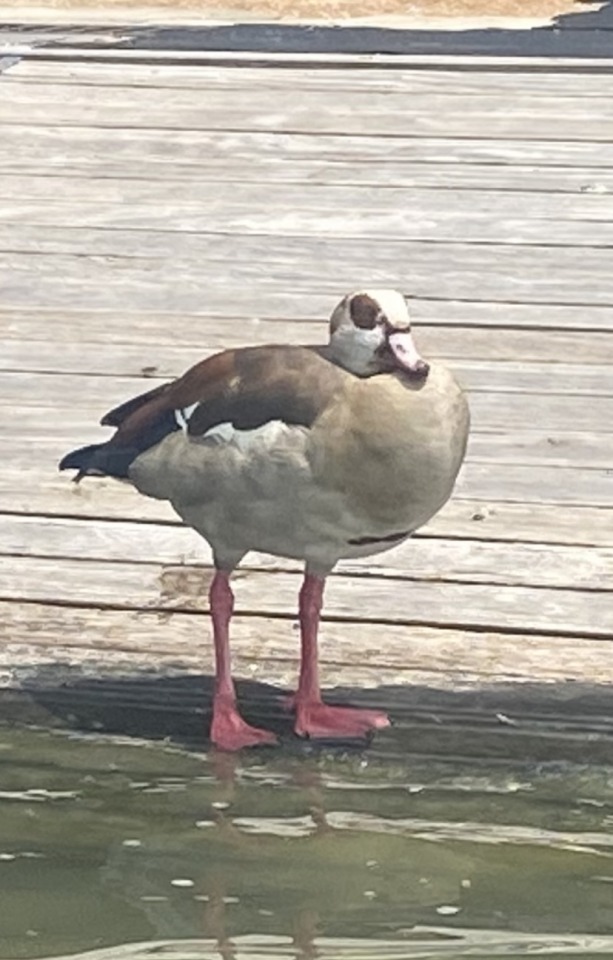
We ask that discussion under questions be limited to how you came to your conclusion, not what your conclusion was.
Happy Birding!
Keep the game alive! Submit a bird HERE
Bird-40 graciously submitted by @skywardswordost
12 notes
·
View notes
Note
Do yu know what other animals were in ancient egypt? I want my oc to have a unique animal and you seem to know a fair amount

I am a well of ridiculous, hyperspecific, only interesting to some trivia lmao.
I would encourage you not to limit yourself to an entirely unique beast- many deities share sacred animals and are still strong individuals. My mind immediately goes to the huge number of feline deities- lions and lionesses in particular- for an example. Additionally, it's nigh impossible for me (with no academic anthropology/egyptology/historic zoology knowledge) to say for certain that particular animals were present in Kemet when they have no documented deities, mummies, or written mentions. I've had to guess for some, deduce by their present day habitats and more or less "timeline" of their species.
It's also important to keep in mind Kemet had contact with other civilizations in other habitats, meaning they were aware of animals not necessarily native to the area. A perfect example is the Hamadryas baboon- they were Nubian animals, but were sacred to both Thoth and Babi, depicted in art, and many mummies of the species have been recovered. A more surprising example is the Syrian brown bear, which was a rare exotic spectacle for the royal elite. There's also the trouble of many species now being extant from the area, meaning they were there but the local population is now extinct- the African sacred ibis is the example my mind comes to first, the waterfowl no longer present along the Nile.
Coincidentally, I've been compiling a list of animals for my own reference to supply a beast or two for the deities that don't have one in tradition.

Birds
Abdim's Stork
African Darter
African Dwarf Kingfisher
African Grass Owl
African Open-billed Stork
African Pied Wagtail
African Sacred Ibis
Asian Green Bee-Eater
Barbary Falcon
Barbary Partridge
Barn Owl
Barn Swallow
Bearded Vulture
Bennu Heron (likely not an actual animal, the Bennu bird inspired by the Goliath Heron- but felt like including it anyhow)
Black Kite
Black Stork
Black-throated Loon
Black-winged Kite
Brown-necked Raven
Carrion Crow
Cattle Egret
Chukar Partridge
Common Buzzard
Common Cormorant
Common Crane
Common Greenshank
Common House Martin
Common Kestrel
Common Kingfisher
Common Pochard
Common Quail
Common Raven
Common Redshank
Common Redstart
Common Sandpiper
Common Spoonbill
Common Teal
Crab Plover
Crested Plover
Dalmatian Pelican
Demoiselle Crane
Eagle (I'm sure there were some, but I can't find any definitive evidence of species in the ancient Kemetic culture- I would take a guess that the Golden Eage was an infrequent visitor)
Egyptian Plover
Egyptian Vulture
European Roller (considered a pest)
European Turtle-dove
Eurasian Coot
Eurasian Crag Martin
Eurasian Teal
Eurasian Wigeon
Fan-tailed Raven
Ferruginous Duck
Gadwall
Garganey
Glossy Ibis
Golden Oriole
Goliath Heron
Great Bittern
Great Bustard
Great Cormorant
Great Egret
Great Spotted Cuckoo
Great White Pelican
Greater Flamingo (possibly not native)
Green Sandpiper
Grey Heron
Griffon Vulture
Helmeted Guineafowl (not native)
Hermit Ibis
Hobby Falcon
Honey Buzzard
Hooded Crow
Hoopoe
Houbara Bustard
House Crow
House Sparrow (pest, hieroglyph had negative connotation)
Kittliz's Plover
Lanner Falcon
Lappet-faced Vulture
Laughing Dove
Lesser Kestrel
Lesser Pied Kingfisher
Little Bittern
Little Bustard
Little Egret
Little Owl
Long-eared Owl
Long-legged Buzzard
Mallard
Marabou Stork
Marsh Sandpiper
Masked Shrike
Merlin
Mourning Wheatear
Northern Lapwing
Northern Pintail
Northern Shoveler
Ostrich
Pale Crag Martin
Peregrine Falcon
Pied Avocet
Pink-backed Pelican
Purple Gallinule
Purple Heron
Red Kite
Red-backed Shrike
Red-footed Falcon
Red-rumped Wheatear
Reed Cormorant
Ring-necked Dove
Rock Dove
Rook
Ruddy Shelduck
Saddle-bill Stork
Saker Falcon
Sandhill Crane
Sand Martin
Sand Partridge
Short-eared Owl
Spotted Redshank
Sooty Falcon
Squacco Heron
Striated Heron
Swan (not native)
Tawny Owl
Tufted Duck
Western Reef Heron
White-backed Night Heron
White-crowned Wheatear
White Stork
White Wagtail
Wood Sandpiper
Yellow-billed Stork
Mammals
Aardvark (possibly not native)
Aardwolf
Addax Antelope
African Clawless Otter
African Giant Shrew
African Green Monkey (not native)
African Grass Rat
African Leopard
African Striped Weasel
Arabian Oryx
Barbary Deer (not native)
Barbary Lion (now extinct)
Barbary Macaque (not native)
Black Rat
Common Patas Monkey (not native)
Black Rhinoceros
Blanford's Fox
Black Wildebeest
Bubal Hartebeest (now extinct)
Cairo Spiny Mouse
Cape Hare
Caracal
Cheetah
Common Beisa Oryx
Common Genet
Desert Hedgehog
Desert Long-eared Bat
Dorcas Gazelle
Desert Black Cobra
Egyptian Fruit Bat
Egyptian Jackal/African Wolf (originally misidentified, now the African Wolf)
Egyptian Mongoose
Egyptian Pipistrelle
Egyptian Red Fox
Egyptian Slit-faced Bat
Egyptian Tomb Bat
Egyptian Weasel
Egyptian Wild Ass
Fennec Fox
Flower's Shrew
Four-toed Jerboa
Geoffroy's Horseshoe Bat
Gerenuk
Giraffe
Golden Spiny Mouse
Greater Egyptian Jerboa
Greater Mouse-tailed Bat
Greater Red Musk Shrew
Hamadryas Baboon (not native)
Hippopotamus
Honey Badger
House Mouse
Lesser Egyptian Jerboa
Lesser Mouse-tailed Bat
Long-eared Hedgehog
Long-nosed Shrew
North African/Bush Elephant (vilified and driven out by prehistoric Egyptians)
North African Crested Porcupine (not native)
Nubian Ibex (not native)
Olive Baboon (likely not native, sometimes called the Anubis Baboon)
Persian Fallow Deer (not native)
Rhim Gazelle
Rüppell's Fox
Sand Rat
Serval (likely not native, but Ra was depicted as one)
Scimitar Oryx
Soemmerring's Gazelle
Somali Dwarf Shrew
Spotted Hyena
Spotted-necked Otter
Striped Hyena
Syrian Brown Bear (not native)
Wild Boar
White Rhinoceros
Yellow Baboon (not native, species' epithet means 'dog-head' in Greek)
Vervet Monkey
Reptiles
African Chameleon
African Rock Python
Arabian Horned Viper
Desert Horned Viper
Desert Monitor Lizard
Egyptian Cobra
Egyptian Gecko
Egyptian Sand Boa
Egyptian Sand Racer
Egyptian Tortoise
Javelin Sand Boa
Insects/Arachnids/Etc.
Nile Crocodile
Nile Soft-shelled Turtle
Red Spitting Cobra
Saharan Sand Viper
Amphibians
African Common Toad
European Green Toad
Marsh Frog
Mascarene Grass Frog
Nile Delta Toad
Nile Valley Toad
Camel Spider
Banded Garden Spider
Brown Widow Spider
Carpenter Ant
Centipede
Click Beetle
Common Housefly (NOT considered a pest, actually revered as a protector)
Danaid Eggfly
Desert Ant
Desert Locust
Devil's Coach Horse Beetle
Dorippus Tiger Butterfly
Dragonfly
Flea
Fire Ant
Jewel Beetle
Gaudy Commodore Butterfly
Half-edged Wall Jumping Spider
Large Salmon Arab Butterfly
Maggot/Carrion Fly
Migratory Locust
Messor Ant
Millipede
Red-breasted Goose
Mosquito (pest)
Moths in the Saturniidae family
Palestine Yellow Scorpion
Pantropical Jumping Spider
Pharaoh Ant
Plain Tiger Butterfly
Praying Mantis
Scarab Beetle
Sinai Baton Blue Butterfly
Southern White Admiral Butterfly
Scorpions in the Buthidae and Scorpionidae families
Water Scorpion
Fish, Mollusks, etc. (Keep in mind fish were taboo in Kemet)
Abju
African Catfish
African Tigerfish
Bayad Fish
Blacktip Shark
Blue-spotted Stingray
Bolti
Chromis
Cichlid
Cornish Jack
Eel
Flatfish
Gilt-head Bream
Great Barracuda
Leopard Shark
Lepidotus Fish
Loligo Squid
Lungfish
Moon Fish
Mullet
Nile Barb
Nile Bichir
Nile Carp
Nile Mormyrid
Nile Labeo
Nile Perch
Nile Puffer
Parrotfish
Reef Manta Ray
Reef Shark
Sandbar Shark
Sea Snake
Scorpionfish
Spiny Lobster
Sturgeon
Surgeonfish
Swordfish
Thornback Ray
Thresher Shark
Tiger Shark
Tilapia
Triggerfish
Unicorn Fish
Wrasse
Zebra Shark
Domestic Animals
Bean Goose
Brant Goose
Camel (not introduced until Middle/New Kingdom)
Cats (Mau breed)
Chickens (not introduced until New Kingdom era)
Cow/Bull
Dogs (Saluki, Greyhound, Basenji, and Pharaoh Hound breeds)
Donkey
Egyptian Goose
Greater White-fronted Goose
Greylag Goose
Honey Bees
Horse (not introduced until New Kingdom)
Pig
Ram
My sources, if you're interested, are the Wikipedia page for Egyptian wildlife, a few different diving sites about the Mediterranean and Red Sea, a couple books I own on Ancient Egypt that describe the geography of the periods, and this lovely reddit multi-post
Sheep
13 notes
·
View notes
Text
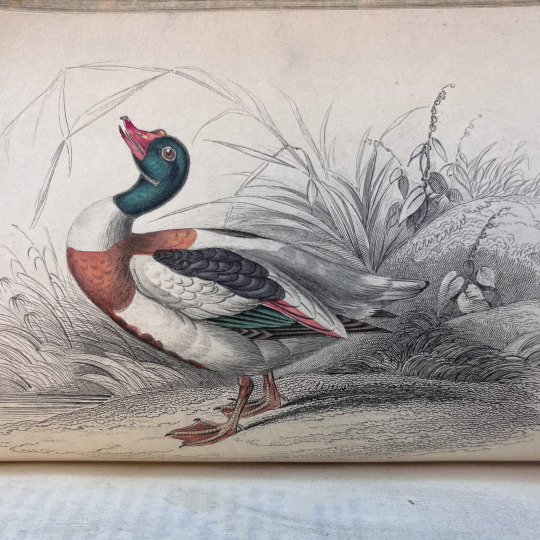
Things are looking up–way up–for this Common Shelduck!
The Common Sheildrake, as Jardine calls it, is a favorite maritime avian that excels in caring for its young:
“In the full adult state of this bird, from the decided markings of clear white, reddish orange, and black, it is one of our most beautiful and clean-looking ducks…When the young are hatched, they are conducted to the sea, and Mr. Selby states, are sometimes carried in the bill of the parents to their protecting element. If come upon when the young are newly hatched, the old birds endeavour to lead off the intruder by feigning lameness like some of the rasores and grallatores…”
Images from:
Jardine, William. The naturalist’s library. Edinburgh: W.H. Lizars et al., 1843. Vol. 27. Catalog record: https://bit.ly/2Q98p8i
8 notes
·
View notes
Text
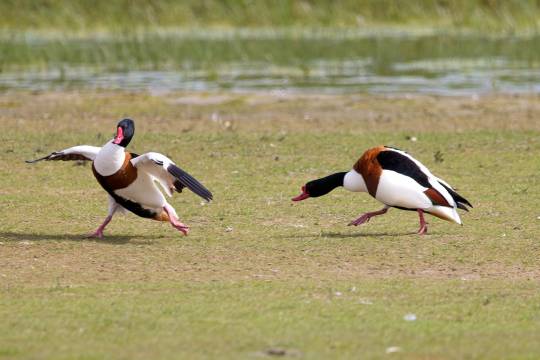
Go away!
Those shelducks were no friends.
83 notes
·
View notes
Text
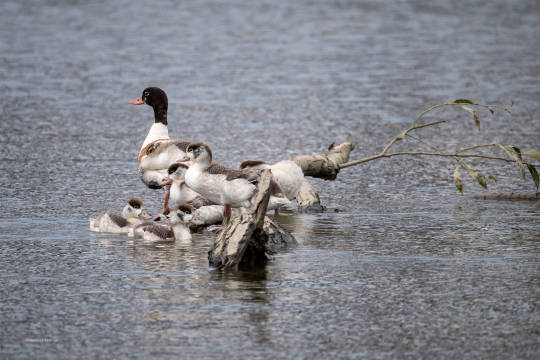

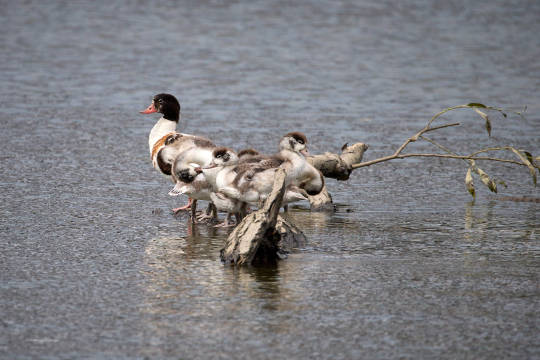
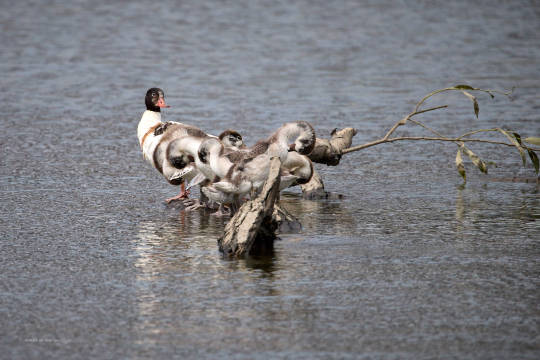


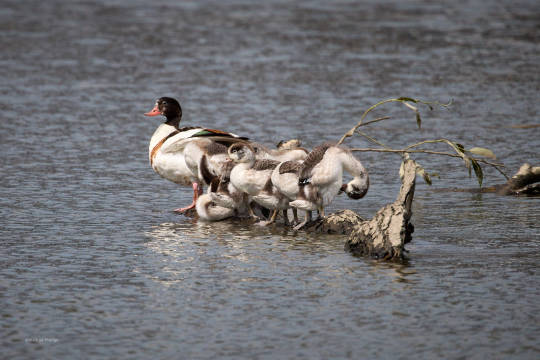



Floating on the river
#photographers on tumblr#original photography#hamburg#birding#urban birding#bird photography#common shelduck#Brandgans#fledgling#River Elbe#drifting log
101 notes
·
View notes
Text
An update of this post because @firstginger‘s quiz got a makeover, it’s not in a reblog as that’d make things too long
Eureka
Allison Blake - hartebeest
Beverly Barlowe - kingfisher (sure it’s not same kind of daemon as Alison’s like before and I’m not sure how the bci shenanigans would work like that but disregarding that one arc it’s otherwise a perfect fit)
Douglas Fargo - peregrine falcon
Grace Monroe - dwarf mongoose
Henry Deacon - snowcock
Holly Marten - dutch warmblood horse
Jack Carter - white-tailed deer
Jim Taggart - roadrunner
Jo Lupo - Pallas’ cat
Nathan Stark - snow leopard (freaking “Lord Asriel kinnie” Nathan Stark, there’s parallels making me burst out laughing right now)
Tess Fontana - shelduck
Trevor Grant - common gecko
Vincent - sparrow
Zane Donovan - caucasian tur
Zoe Carter - Nubian goat
Warehouse 13
Artie Nielsen - Himalayan cat
Claudia Donovan - African civet
Leena - king quail
Mrs. Frederic - wolf spider
Myka Bering - European mole
Pete Lattimer - California sea lion
Steve Jinks - alligator snapping turtle
The Librarians
Cassandra Cillian - sable
Eve Baird - okapi
Ezekiel Jones - motmot (no, @merwinist, I didn’t just rig this to get him a tiny-enough-for-thieving daemon)
Flynn Carsen - golden eagle
Jacob Stone - Himalayan tahr
Jenkins - crayfish
#eureka#a town called eureka#warehouse 13#allison blake#beverly barlowe#douglas fargo#grace monroe#grace deacon#henry deacon#holly marten#jack carter#jim taggart#jo lupo#nathan stark#tess fontana#trevor grant#vincent#zane donovan#zoe carter#artie nielsen#claudia donovan#leena#mrs. frederic#myka bering#pete lattimer#steve jinks#cassandra cillian#eve baird#ezekiel jones#flynn carsen
25 notes
·
View notes
Note
Hope u don't mind me popping in here with a little finch info correction! It's not accurate to say you can always tell the male from female bird with their more colorful plumage, because not all birds are sexually dimorphic in that way. Neither are all finches. ^^
Examples of female birds that are more colorful than the males: Belted Kingfisher, Phalarope species, Paradise Shelduck, etc
But lots of finches have the same plumage male and female (or the difference is very small and not reliable), especially among species commonly kept in captivity. Such as: the Scaly-breasted Munia (aka Spice finch), Society Finch (which only exists in captivity), Shaft-tail Finch, Owl Finch, etc etc.
A more reliable way to tell male and female songbirds apart, is that males are the only ones that sing. :)
Yes! Thank you for the heads up, you're absolutely right!
Where i am we can mostly tell male and females from the colors on their feathers, but exeptions do exist and are common!
I was so excited abt this that i didn't look into it further :3 bc i wanted to get it out as fast as possible!
I also really wanted to do the murder joke with the purble finche lol
Thanks for the correction!!
4 notes
·
View notes